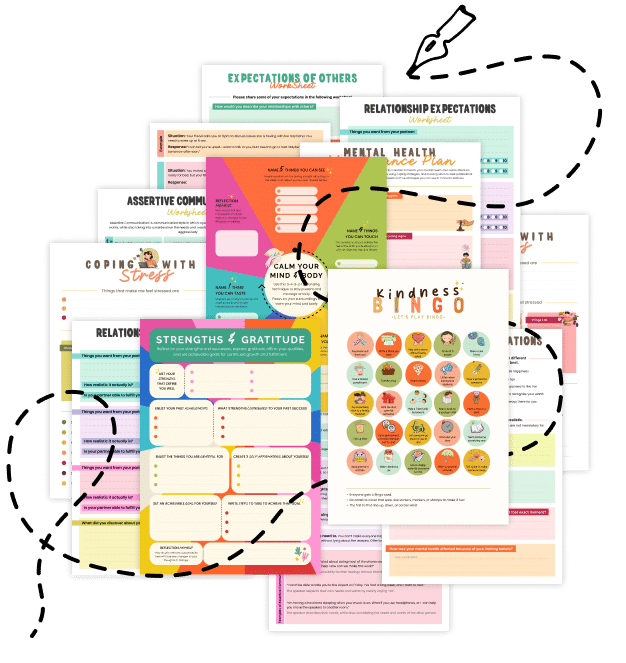20 Things You Should Know About Social Facilitation
Explore Social Facilitation—how the presence of others can boost your performance on simple tasks or sometimes hinder complex ones. Discover 20 key insights and practical tips to harness its power for improved productivity and creativity.
1. What Is Social Facilitation?
Social Facilitation is the phenomenon where the presence of others influences your performance. Depending on the task, this can either enhance or impair your ability to perform.
2. The Basic Principle
The idea is simple: when you’re being observed or working in a group, you tend to perform differently than when you’re alone. This effect is driven by increased arousal and motivation.
3. Enhancing Simple Tasks
For routine or well-practiced tasks, the presence of others usually boosts performance. Think of an athlete who runs faster in a competitive race compared to solo training.
4. The Challenge of Complex Tasks
Conversely, when a task is new or complex, being observed might increase anxiety and hinder performance. This is because heightened arousal can interfere with concentration and decision-making.
5. The Yerkes-Dodson Law
This classic psychological principle explains that there’s an optimal level of arousal for peak performance. Too little or too much arousal—often influenced by social presence—can impair performance.
6. Social Facilitation vs. Social Loafing
While social facilitation describes improved performance due to others’ presence, social loafing occurs when individuals exert less effort in a group setting. Knowing the difference helps in structuring group activities.
7. The Role of Evaluation
When others are watching and you believe you are being evaluated, performance tends to be enhanced on tasks you know well. The pressure to impress can serve as a powerful motivator.
8. Group Dynamics and Energy
Working in a team can generate positive energy that fuels individual effort. Collaborative environments often bring out the best in people through shared enthusiasm and support.
9. The “Audience Effect”
The mere presence of an audience—even if they’re not directly involved—can boost performance on simple tasks. This is why musicians, athletes, and performers often excel in front of live crowds.
10. Performance Anxiety
For some, being watched increases self-consciousness and can trigger performance anxiety, especially in high-stakes or unfamiliar situations. Recognizing this can help you develop coping strategies.
11. Practical Tip: Simulated Audiences
If you’re preparing for a presentation or performance, try practicing in front of a small, friendly audience. This can acclimate you to the presence of others and improve your performance.
12. Enhancing Creativity
Social facilitation isn’t just about physical tasks; it can also spur creative output. Brainstorming sessions, where ideas flow freely among team members, often lead to more innovative solutions.
13. Task Familiarity
The more familiar you are with a task, the more likely social facilitation will have a positive effect. Repeated practice builds confidence, making you less susceptible to performance pressure.
14. Individual Differences
Not everyone responds to social facilitation in the same way. Personality traits, such as extroversion and self-confidence, can determine whether you thrive in group settings or prefer working solo.
15. Setting Up for Success
To leverage social facilitation, design environments that are supportive and non-judgmental. Positive peer feedback and a collaborative atmosphere can help minimize anxiety and enhance performance.
16. Mindfulness and Focus
Practicing mindfulness can help you maintain focus even when you’re aware of an audience. Staying present in the moment reduces the distraction of worrying about others’ perceptions.
17. Feedback and Improvement
Use the social setting as an opportunity for constructive feedback. Listening to peers and mentors can help you refine your skills and build on your strengths.
18. Balancing Solo and Group Work
While group work can enhance performance through social facilitation, don’t underestimate the value of solitary practice. A balanced approach allows you to benefit from both individual concentration and group energy.
19. Real-World Applications
Social facilitation is relevant in many areas—from workplace productivity to academic settings and athletic performance. Recognizing its effects can help you adjust your strategies depending on the context.
20. Related Topics to Explore
- Cognitive Load Theory: Understand how mental capacity affects performance in different environments.
- Task Switching Costs: Learn how frequent shifts between tasks in group settings impact productivity.
- Adaptive Confidence: Building a balanced self-assurance in the presence of others.
- Social Loafing: Explore the flip side of group dynamics and how to counteract it.
Quick Tips for Leveraging Social Facilitation
- Practice in Front of Others: Gradually expose yourself to audiences to build confidence.
- Design a Supportive Environment: Surround yourself with positive, encouraging peers.
- Mix Solo and Group Work: Combine independent practice with collaborative sessions.
- Focus on Familiar Tasks: Start with well-practiced activities before tackling new challenges.
- Use Mindfulness Techniques: Stay present and reduce anxiety by focusing on the task rather than the audience.
Social Facilitation shows that the presence of others can be a double-edged sword—boosting performance on familiar tasks while potentially hindering complex ones. By understanding the underlying principles, such as the Yerkes-Dodson Law, and implementing strategies to manage anxiety, you can harness the positive aspects of social facilitation for enhanced performance. Whether you’re preparing for a big presentation, a sports event, or a creative brainstorming session, leveraging group energy can help you achieve your goals.
Share this article with anyone looking to boost their performance in social or group settings. With the right strategies, you can transform the pressure of an audience into a powerful motivator for success!

